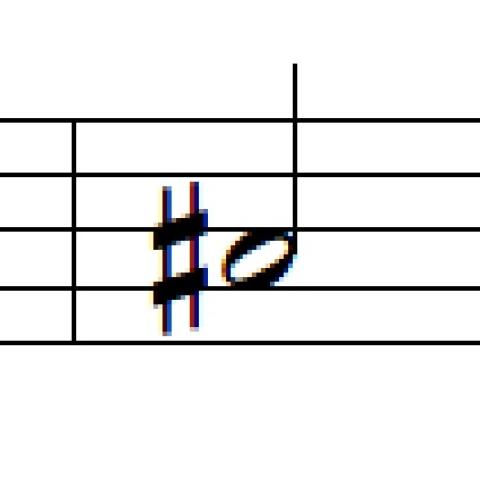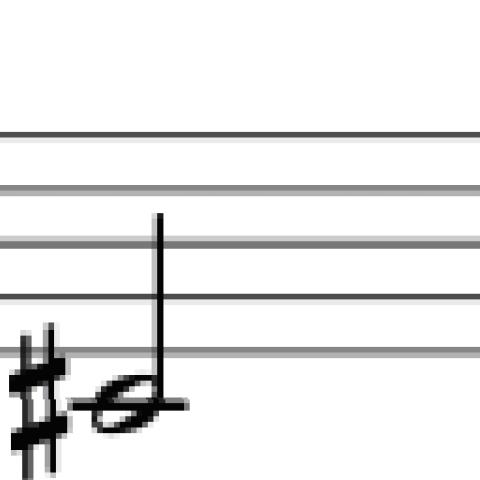
Interruption
I am typing this column slower than usual—with one hand. About three weeks ago I had surgery, apparently entirely successful, to repair a rather large rotator cuff tear in my left shoulder. I am now about halfway through the time I need to keep my left arm immobilized in a sling. This has not just impeded my typing, but has also kept me from playing music. In mid-October, about the time when I was writing my December column, I began to find the pain in my shoulder severe enough that I could not play for more than a few minutes at a time. It was about then that I acknowledged that I had already been shying away from practicing or playing much for a month or two. Depending on how rehab goes, I will not have played regularly for a period of from five to six months or longer.
I have had to cancel—or postpone—four planned performances of J. S. Bach’s The Art of the Fugue. Fortunately, only one had been publicly announced when I was forced to make that decision. As far as I can remember, this is the first time that I have not had any concerts scheduled in about thirty-five years. It feels odd: simultaneously peaceful and eerie.
My right arm bears the burden of doing everything for the time being and is beginning to complain. Typing has become painful, and I can only type for a few minutes at a time. Hence this column is a short one. I am a slow typist anyways; I never learned to type. I peck away with one finger at a time—usually, one finger on each hand, but for now, one finger, period. I estimate that typing with just my right hand makes it take three times as long—some of that just because I am bringing fewer resources to bear, some of it compounded out of the greater number of wrong keys that I hit and the need to make corrections. It interests me to ponder: would the need to type one-handed make more or less of a difference to someone who could “really” type? I suspect more.
I am occasionally asked why I never learned to type. Given that I do a similar but arguably more complicated task with my hands, they I assume that I could pick it up naturally. Either I just never happened to get around to it, did not need it enough to be motivated to do it, or I was (subconsciously) afraid that it would somehow confuse me as to my keyboard playing!
There are two reasons that this month’s column does not continue my discussion of The Art of the Fugue. That I can only type a sentence or two at a time before I need a break makes trying to construct the arc of a serious discussion frustrating or impossible. The breaks are too distracting, as is the heightened need to correct typographical errors. I would feel strong pressure to keep it short, or not to be overly conscientious if I suspected that I had written something the wrong way or left something out.
But also, I am still not that far removed from the brief but intense period right around surgery when I was in a lot of pain. I still do not feel ready to think connectedly about matters that are important enough to deserve and need the respect of careful, connected thought. I expect to get back to The Art of the Fugue next month, if all goes well, and pick up where I left off. This column, then, is just a few notes or jottings from the middle of an interlude.
It is interesting to take a hiatus from performing at this time. Even though I know that it is just temporary, it feels like a change, it feels different. I seem to be experiencing an enhanced set of memories of, and a kind of affinity for, my late childhood and teenage years. That was a time when I knew that I cared deeply about music and spent a lot of time daydreaming about being a musician and a performer, but did not really believe that I ever could be. Why not? That question has always interested and even haunted me, and I do not have a clear or complete answer. Perhaps this current experience will make me search for one. That could be fruitful and enriching, and also intensely relevant to thinking about teaching, learning, and motivation.
In those years I was a listener more than a performer. Right now, though, I find it difficult to listen. I have not listened through a piece of music in weeks. I suspect that this may be because I am not quite yet up to scratch mentally. However, I notice that when I hear music casually, mostly as movie or television soundtracks, I hear it very intensely. I am noticing more detail and responding emotionally in a more vivid way than I expect in that situation. Of course, that is in short bursts—low demands on concentration, no need to try for that longer arc that is normally so important to me. Perhaps that explains this focus. But I wonder whether sometimes I let my focus on the music that I am working on, or that I am working on with students, partially block my commitment to really hearing other music. I suspect that this is true, and I want to observe it as I get back to playing.
I still always have music going through my head. During the last few weeks this has been essentially all piano music: Mozart, Beethoven, Schubert. I react to this as being also a bit of a return to my much earlier years. This was most of what I listened to as a teenager.
Concerning motivation
I am very aware that I have a fairly long and intense stint of physical therapy coming up. It will begin in two or three weeks, as soon as my sling is removed. I really, really need and want to do it right. I gather that the success of the whole enterprise of returning my arm to full function will depend significantly on this stage. I care a lot about getting back to a state in which I do not feel any physical constraints on my organ and harpsichord playing. I care a lot about returning to playing golf (see my column from December 2014); and, of course, I care about just being okay in day-to-day life.
I was surprised when two or three friends of mine independently said to me something like, “Of course the rehab will be easy for you. You’re a musician. You’re used to working patiently, systematically, etc.” The reason I am surprised is that I am usually terrible at that. I know something about how to describe that sort of systematic work, at least when it forms part of organ or harpsichord learning, precisely because it does not come easily to me. I have had to puzzle it out very deliberately.
That is why this is about motivation. I am actually serenely confident that I will do the physical therapy assiduously and thoroughly. But that is only because, first, I am very strongly motivated to do it, and, second, I understand that the only time to do it is now—one chance. The structure will be externally imposed, as it has to be. The physical therapists know what I need to do; I do not.
If there is an analogy between this and learning music, it involves the very practical side of the latter: the part about “if you follow these steps, you will learn the notes, you will develop the skill;” not the parts about interpretation, rhetoric, communication. In a way, physical therapy is like systematic practicing, but one step farther back. It is, because of the particular circumstance, the practical thing that I must do in order to achieve the practical things that I am used to doing and that I try to help other people accomplish.
That is all for now. I expect my discussion of The Art of the Fugue will resume next month.





